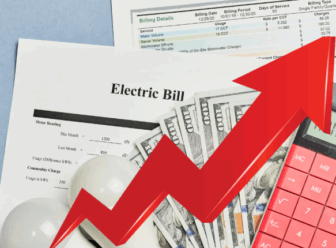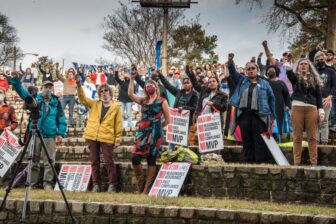The Baltimore Sun
By Mike Tidwell
With ominous global warming accelerating year after year, why can’t Maryland construct a single clean-energy wind farm within its borders? Al Gore wins a Nobel Peace Prize and Gov. O’Malley’s own blue-ribbon commission says we must get off fossil fuels very, very soon. But our state – one the most vulnerable in America to global warming and one the most politically liberal – can’t achieve even the baby step of a single commercial wind farm? What’s the problem? West Virginia has dozens of modern windmills. Pennsylvania even more.
The answer was on full display in December when word leaked that O’Malley was considering leasing state land in Western Maryland to windmill development. Never mind that huge portions of the Savage River State Forest in question are already subject to logging by commercial timber companies. Never mind that many of the trees there are affected by acid rain from the very same coal-fired power plants wind farms are meant to displace. Never mind, too, that unchecked global warming is projected to devastate our Appalachian ecosystems. When word spread of the possible placement of 100 modern windmills in this same area, critics sharpened their knives.
These same opponents, of course, are quick to say they support wind power in general and the fight against global warming. They just don’t want windmills on limited public lands in rural western Maryland (although logging is apparently okay). They don’t want windmills on private land in Western Maryland either. They don’t want windmills offshore near Ocean City or along the southern shores of the Chesapeake Bay. Wind farms have been proposed for all of these areas and in each case opponents have successfully waged media battles and/or frivolous legal challenges to slow them down or stop them outright. This despite polls showing Marylanders overwhelmingly support renewable energy development.
To be clear: No one is calling for the placement of wind farms on state or federal park land or sensitive wilderness areas. Again, the Savage River parcel is a “managed” state forest that is already being logged. With global warming rapidly accelerating, why not harvest wind power there, too, in a few select locations?
Early arguments against wind farms as a danger to bird populations have been totally disproved by new scientific research. Now the main argument is the visual impact. Beauty is in the eye the beholder, of course. I believe most people are like me: they experience strong feelings of hope and optimism when they see slow-moving modern windmills in the distance. But others find them horrifying to look at even though, to site one example, the proposed windmills off of Ocean City would be half the size of your thumb nail when viewed from the beach. And what will be the visual effect of Ocean City under water and abandoned due to sea-level rise or our Appalachian forests completely dead from the record heat, drought and wildfires of global warming?
A final criticism of the Savage River proposal – one tragically repeated by Sun editorial writers and a reporter – is that the wind farm would result in the serious clear-cutting of trees. This is totally false. The fact is that under normal “management” operations over the next 25 years, private timber companies will be allowed to cut between four and six thousand acres of the Savage River forest, according to a spokesman there. That’s up to ten percent of the entire state forest. And how many acres will the proposed wind farm displace over those same 25 years? Answer: 300 acres. And the project developer, U.S. Wind Force, has pledged to compensate by purchasing 300 acres of unprotected forest elsewhere in western Maryland and deeding it to the state for permanent protection, never to be logged.
In return, this one wind farm would provide clean, climate-safe electricity for every single home in western Maryland.
Gov. O’Malley is right to seriously consider supporting the Savage River wind project. He is also right to push hard for wind projects in other parts of our state, including the Ocean City offshore wind park.
Indeed, on global warming, O’Malley was correct when he recently said, “The time for action in Maryland has passed. The time to catch up is now.”
Mike Tidwell is executive director of the Chesapeake Climate Action Network. He can be reached at mtidwell@chesapeakeclimate.org.




